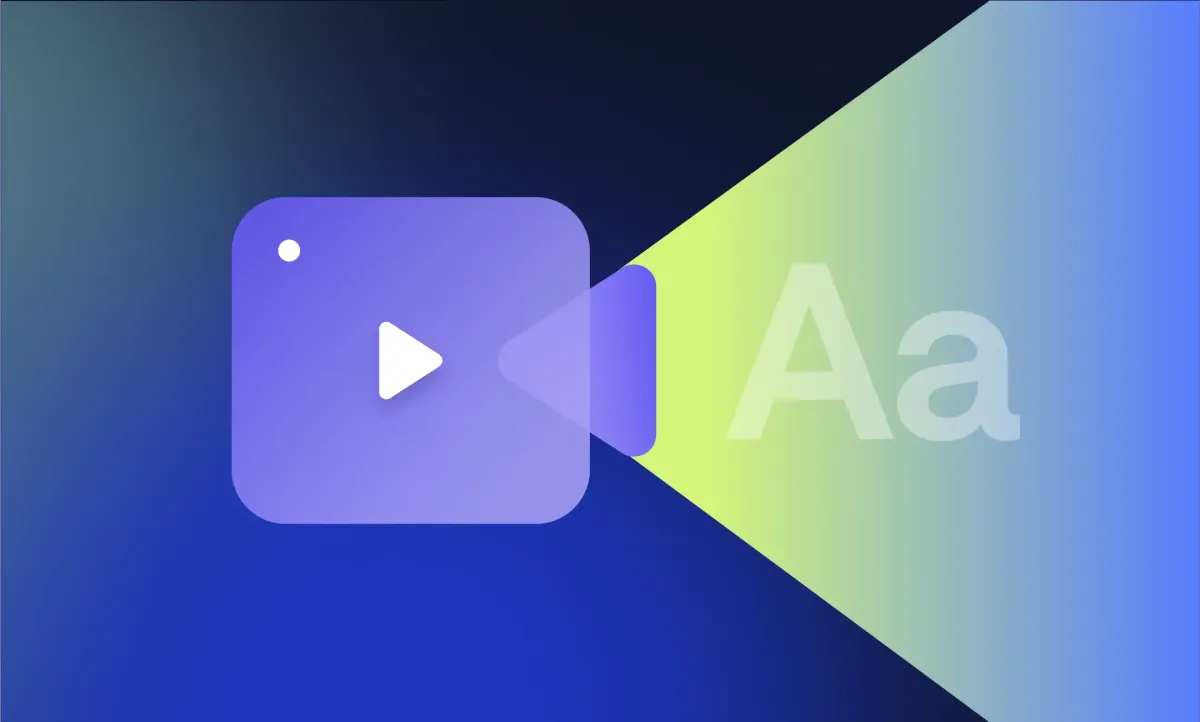Short films might be small in runtime, but they demand just as much thought, structure, and creativity as any feature. If anything, they’re harder; you’ve got less time to win over your audience and no room for fluff.
This guide will walk you through how to write a script for a short film that feels tight, sharp, and emotionally resonant, without getting lost in Hollywood formatting or overthinking every detail.
Key Takeaways
- Short films thrive on clarity and focus. Start with one strong idea or conflict, and avoid trying to fit in too much. The best stories in this format are tight, emotional, and simple.
- Visual storytelling matters more than dialogue. Show character, mood, and plot through images, actions, and expressions. Every frame should carry weight.
- Structure is essential, even in short films. Use a basic three-act framework to give your script momentum and a satisfying arc without overcomplicating it.
- Formatting and scene economy go hand in hand. Proper script formatting keeps your ideas clean and readable, while short, purposeful scenes maintain pace and impact.
- AI tools can support creativity, not replace it. Use AI for brainstorming, drafting, and formatting, but always refine the output with your own voice, judgment, and emotional nuance.
Screenplay vs Script: What’s the Difference?
When starting your journey into filmmaking, you might hear the terms screenplay and script used interchangeably, but they actually have subtle differences.
What Is a Script?
A script is a broad term that refers to any written text that outlines dialogue, actions, and instructions for a performance. This can include plays, radio dramas, TV shows, or films. It’s essentially the blueprint for the story, but it can vary greatly depending on the medium.
What Is a Screenplay?
A screenplay is a specific type of script written for films and television. It includes detailed instructions on dialogue, scene settings, character actions, and sometimes technical notes for directors and cinematographers. Screenplays follow a strict format that helps everyone on set understand timing, pacing, and transitions.
Why It Matters for Short Films
For short films, you’ll mostly work with a screenplay because it’s designed for visual storytelling. Knowing the difference ensures you’re writing with the right structure and clarity, making it easier for collaborators to bring your story to life.
In summary, all screenplays are scripts, but not all scripts are screenplays. When you write a short film, you’re writing a screenplay, a focused guide for how your story unfolds on screen.
Scriptwriting Tips for Beginners
1. Focus on One Core Idea
When writing a short film script, less is definitely more. Pick a single, clear concept or conflict to explore. Trying to cram too many ideas into a few minutes will dilute your story and confuse the audience. A focused narrative makes for a stronger emotional impact and keeps your viewers hooked from start to finish.
2. Think Visually, Not Verbally
Remember that film is a visual medium. Instead of relying on dialogue to explain your story, think about how you can show emotions, plot, and character development through visuals — actions, settings, facial expressions, and body language. Strong imagery often speaks louder than words.
3. Write Authentic Dialogue
Avoid stiff or overly formal dialogue. Listen to how people naturally talk and replicate that flow in your script. Include pauses, interruptions, and slang if it fits the character. Authentic dialogue brings characters to life and makes your story more relatable.
4. Master the Three-Act Structure
Even in short films, a clear structure helps your story breathe. Begin by setting up the world and characters, introduce a conflict or challenge in the middle, and wrap it up with a resolution. This structure guides the audience through your story smoothly, creating a satisfying experience.
5. Keep Your Scenes Short and Purposeful
Every scene should have a purpose, whether to reveal character, advance the plot, or build atmosphere. Avoid unnecessary scenes that don’t contribute to the story’s progression. Short, impactful scenes maintain pacing and keep viewers engaged.
6. Format Your Script Properly
Good formatting isn’t just for professionals; it helps you organize your ideas and makes your script easy to read for directors, actors, and crew. Use screenplay software or templates to keep dialogue, action, and scene headings clear. A well-formatted script signals professionalism and respect for your collaborators.
Script Writing Ideas for Short Films
1. The Unexpected Encounter
This idea focuses on two strangers who meet in an unusual circumstance, like a chance encounter at a train station or an elevator stuck between floors. The tension or connection between the characters drives the story forward. This concept is great because it lets you explore character dynamics deeply in a short amount of time, without needing elaborate sets or many characters. The challenge is to create meaningful dialogue or action that reveals their backstories and motivations quickly, giving the audience a glimpse into their lives and how this meeting changes them.
2. A Day in the Life
Center your script around a single day in the life of your protagonist, capturing their routine or a pivotal moment. This idea allows for intimate storytelling, giving viewers a snapshot of someone’s world: their struggles, joys, or hidden complexities. Since it’s set in a confined timeline, it’s easier to keep the story focused and pacing tight. It’s ideal for highlighting internal conflict or small but significant decisions that define the character’s journey.
3. The Secret
A classic storytelling theme, this idea revolves around a character who harbors a secret that threatens to unravel. It could be a personal secret, a hidden talent, or a mysterious past. The suspense created by the secret’s potential exposure drives tension. This concept hooks viewers with curiosity and offers a payoff when the secret is revealed, making it perfect for short films where every moment counts.
4. Lost and Found
Explore the emotional journey of loss and discovery.This idea is powerful because it taps into universal feelings that audiences can easily relate to. The act of finding or rediscovering something can symbolize growth, hope, or closure, giving your story emotional depth despite a short runtime.
5. The Moral Dilemma
Put your protagonist in a situation where they must make a difficult ethical choice, such as choosing between loyalty and truth, or personal gain and doing what’s right. This idea sparks intense conflict and character development. It invites viewers to think about their own values and what they would do in a similar situation, which makes your film memorable and thought-provoking.
6. Time Loop
A character relives the same moment or day repeatedly until they learn an important lesson or change something crucial. This idea is compelling because it combines mystery, suspense, and character growth. It challenges you as a writer to creatively vary scenes while keeping the narrative clear, and it’s popular with audiences who enjoy psychological twists in a compact story.
7. The Last Message
Focus on a character sending or receiving a final message, whether a letter, voicemail, or text, before a major life event. This can be dramatic, romantic, or suspenseful. The last message acts as a storytelling device to reveal backstory and emotions in a concise way. This idea allows you to build tension or sentimentality around a brief exchange with lasting impact.
8. Stranger in a Strange Land
Drop your protagonist into an unfamiliar environment, like a foreign city or an otherworldly place, and follow their struggle to adapt or find their way home. This idea creates natural conflict and opportunities for visual storytelling. It can be metaphorical for feeling lost or out of place, which resonates deeply with many viewers and provides rich emotional layers to explore.
9. The Unexpected Hero
Write about an ordinary person who ends up in an extraordinary situation requiring courage or quick thinking. This idea highlights human resilience and the capacity for change under pressure. It’s inspiring and often uplifting, perfect for short films that want to leave audiences feeling hopeful or empowered.
10. The Silent Conversation
Craft a story where the main communication happens without words, relying on expressions, gestures, and visual cues. This idea emphasizes show-don’t-tell storytelling and can be highly artistic. It challenges you to convey emotion and plot purely through visuals, which is ideal for filmmakers wanting to experiment with cinematic language and evoke strong feelings through subtlety.
How to Use AI to Write a Script for Short Films
AI scriptwriting is quickly becoming a game-changer in the world of filmmaking, especially for creators working on short films. Whether you’re a beginner who struggles with blank pages or a seasoned writer looking to speed up your workflow, AI tools can be an incredible resource. But like any technology, they come with their own set of pros and cons.
Using AI for scriptwriting means leveraging advanced language models that can generate dialogue, suggest plot points, and even help with formatting. Instead of starting from scratch, you can feed the AI a basic idea or prompt, and it will generate creative suggestions or entire scenes for you to build upon. This can save you time, reduce writer’s block, and spark ideas you might not have thought of otherwise.
However, it’s important to remember that AI tools are assistants, not replacements. While they can produce impressive drafts quickly, the final script still requires your creative judgment. AI may sometimes produce clichés or lack emotional depth since it doesn’t have lived human experience. You also need to watch for over-reliance, which might make your writing feel generic or disconnected from your unique voice.
In short, AI scriptwriting works best as a collaborative partner, a tool to inspire, speed up, or refine your process, rather than a solo creator. Here’s how you can decide if AI scriptwriting is right for you and a guide to the best tools and prompts to get started.
Why Use AI for Scriptwriting?
- Idea Generation and Brainstorming. AI is fantastic for overcoming writer’s block. If you’re stuck on how to start a story or need fresh twists, AI can suggest ideas based on your input. This helps jumpstart creativity and get your script moving.
- Speed and Efficiency. Writing a script can be time-consuming. AI can draft dialogue or scene descriptions quickly, allowing you to focus more on refining and personalizing the story instead of building everything from the ground up.
- Formatting Help. Many AI tools come pre-loaded with screenplay formatting rules, so your draft can be export-ready or easier to polish in professional scriptwriting software.
- Learning and Experimentation. For beginners, AI can model good scriptwriting by example. You can learn pacing, structure, and dialogue styles by analyzing the AI’s outputs and iterating on them.
When Not to Use AI for Scriptwriting
- Authenticity Matters Most: If your story relies heavily on nuanced human emotion, cultural context, or personal experience, AI may fall short in capturing that authenticity. It lacks intuition and empathy.
- Risk of Generic Content: AI bases its outputs on patterns in existing data, so it can sometimes generate predictable or overused tropes. Without strong editing, this might dilute your script’s originality.
- Creative Control: Some writers feel constrained by AI suggestions or worry it influences their style too much. If you prefer total control over every word and beat, AI might feel limiting.
- Privacy and Ownership: Using AI tools often involves uploading ideas or content to cloud platforms. This raises questions about intellectual property and data privacy that you should consider, especially if your script is confidential.
What's the Best AI for Scriptwriting?
If you’re ready to experiment with AI for your short film script, here are three top AI tools designed for scriptwriting and creative writing:
1. Jasper AI (formerly Jarvis)
Jasper AI is a versatile AI writing assistant popular among content creators. It offers customizable templates for different writing styles, including screenplay and dialogue generation. You can give it detailed prompts or use its “Story Builder” feature to develop plot outlines. Jasper is user-friendly and great for quickly drafting scenes or brainstorming ideas. Its tone customization lets you keep your script aligned with your creative voice.
2. Final Draft with AI Features
Final Draft is the industry standard for professional screenwriting, and it now includes AI-powered features to assist writers. Its AI helps with formatting, script breakdowns, and can even suggest dialogue improvements or plot developments based on your input. If you want the power of AI integrated with top-tier script formatting and collaboration tools, Final Draft’s AI-enhanced version is a solid choice.
3. ChatGPT by OpenAI
ChatGPT is a conversational AI that can be adapted for scriptwriting by feeding it prompts or scene descriptions. It’s free to access with basic plans and allows very flexible interactions — you can ask it to write dialogue, describe settings, or brainstorm twists. ChatGPT is excellent for experimenting with different writing styles, but you’ll need to guide it well and polish the output yourself for screenplay format and pacing.
Best Scriptwriting Prompts for AI
Using AI tools often begins with a solid prompt. Here are three unique prompts you can feed into an AI or use yourself to spark your short film script:
Prompt 1: "A character wakes up in a city where no one speaks, but everyone communicates through music."
This prompt sets up an intriguing, almost surreal setting that challenges you to think visually and sonically. It pushes creative boundaries around how characters express emotion without dialogue, perfect for a visually driven short film.
Prompt 2: "A small town discovers an ancient artifact that grants one wish to the first person who finds it, but the wish comes with unexpected consequences."
This classic narrative foundation invites you to explore themes of greed, hope, or fate within a compact story. It’s great for weaving suspense and moral dilemmas in a limited runtime.
Prompt 3: "Two strangers are trapped in an elevator during a power outage and slowly reveal secrets that change how they see each other."
This prompt focuses on character development and dialogue, making it ideal for a minimalist production. The confined setting forces the story to rely on tension, emotion, and gradual revelation.
Create Short Films with Podcastle
Once your script is ready, bringing your short film to life is the next exciting step. Podcastle offers a powerful video editor designed to simplify the content creation process from start to finish. No matter what type of footage you’re working with, Podcastle’s intuitive tools let you edit, add voiceovers, and enhance your video quality, all in one place.
The platform’s user-friendly interface means you don’t need to be a professional editor to create engaging videos. Plus, Podcastle supports seamless collaboration, so you can easily work with your team or get feedback from peers.
With Podcastle, transforming your script into a captivating short film has never been easier or more accessible.
FAQs
How many pages is a short film script?
A typical short film script ranges from 5 to 20 pages, depending on the length of the film. Most short films last between 5 to 20 minutes, and a good rule of thumb is that one page of script roughly equals one minute of screen time. Keeping your script concise and focused helps maintain a tight narrative that works well within the short film format.
What makes a good short film?
A good short film tells a compelling story that grabs attention quickly, develops interesting characters, and delivers a clear emotional or thematic impact. Because of its limited runtime, every scene should serve a purpose. Strong visuals, creative storytelling, and authentic emotion are key ingredients. Good pacing and an engaging hook at the start are also essential to keep viewers invested until the end.
What are some common mistakes to avoid in scriptwriting?
Avoid overly complicated plots that don’t fit into a short film format. Don’t rely too heavily on exposition or dialogue; show, don’t tell whenever possible. Watch out for clichés and predictable outcomes,and aim for originality. Also, be mindful of pacing, ensuring the story moves smoothly without dragging or rushing. Lastly, remember that formatting matters; a well-formatted script helps everyone involved understand your vision clearly.
How long does it take to write a script for a short film?
It depends on the complexity of the story and your writing experience, but most short film scripts can be written in a few days to a few weeks. A simple 5–10 minute script might take one or two focused writing sessions, while more layered stories with multiple revisions could take longer. If you’re brainstorming from scratch, allow extra time for outlining, drafting, and refining. Using tools like AI writing assistants can speed things up, but strong scripts still require thoughtful editing and creative decision-making.








